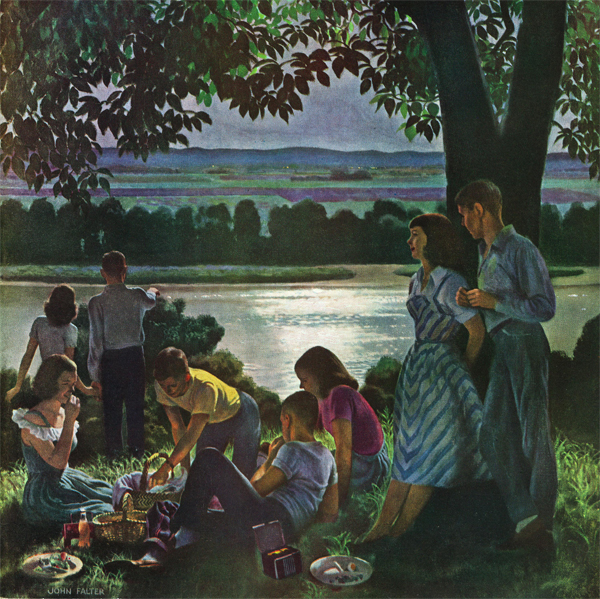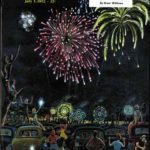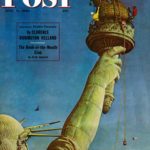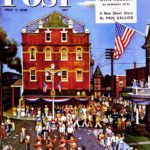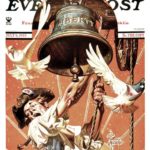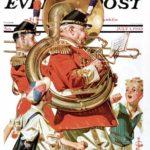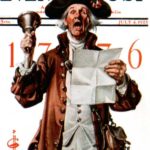Staycations: Less Stress, More Fun!
Paris, Kentucky, will never be Paris, France, no matter how great the Kentucky Horse Park and Bluegrass Bourbon may be. But you do score some undeniable bonuses with close-to-home travel: No airports, no TSA, no exchange rate, and no translation.
Part of the joy of blooming where you’re planted is the spontaneity of flipping open an atlas or speed-dialing a GPS and heading off whichever way the wind blows. If something piques your interest, you can go down a country lane or make a fresh turn into an undiscovered part of the city. You’re an explorer in your own land, digging deeper into the history and culture of an area you thought you knew. For starters, here’s a dozen ideas to mix and match after checking local city guides for details. (And remember, you’ll always have Paris—be it Kentucky or France.)
Sunup
- If you’re a sports fan, grab your favorite treats from the concession stand and root for a minor or major league team at a stadium you’ve never visited before.
- When flowers are in glorious bloom, stroll through outdoor sculpture parks, gardens, and zoos that are proud of their gardens, too.
- Pull on a life jacket and hop on board a riverboat or lake cruiser to explore a new body of water. Some cities have amphibious duck rides that plunge you right into the waves.
- Weather permitting, pack a picnic with foods from a deli or market you’ve not yet tried. Check out city or state parks within an easy drive, and again, try one that’s new to you.
- Book a matinee at a regional theater, then the evening will be free for a special dinner together.
- Look into local historical societies, and explore a noteworthy house museum or a quirky local landmark. Some areas were famous for making glass, fine furniture, or farm equipment, and dedicated curators have saved the best for later generations to enjoy.
Sundown
- Make a reservation to dine by a lake or river. Twilight’s magical on the waves.
- Be brave and hop into a pub or tavern for karaoke night. Brush up your “Jeopardy!” skills with trivia night at the pub or sports bar.
- Travel for your stomach. Search for regional favorites wherever you go: Maybe it’s Cincinnati chili, Milwaukee beer and brats, or a Maine lobster bake.
- Find the oldest tavern in town and taste a bit of history. Order up the signature drink that’s been pleasing locals for generations.
- Scan university music and theater programs for some of the best productions (and prices!) in town.
- Break out of your pizza rut and try a new regional style—every town has its favorite twists on the best pie.
Classic Covers: The Fourth of July Throughout the Decades
Artist Guernsey Moore did many turn-of-century covers (at the turn of the 20th century, not the 21st), and the June 30, 1900, issue appears to be our first Fourth of July cover. Using colonials as representative of the Fourth was popular before the days of fancy fireworks and Fourth of July parades, although firecrackers showed up early. The July 4, 1903, cover shows a man setting off firecrackers and milady, in long skirt, is less than thrilled with the noise (covering her ears was a hint). Hmmm, this theme seems familiar: fast forward to the roaring 20s and J.C. Leyendecker’s cover depicting a young boy setting off a cap gun to make patriotic noises and a little girl covering her ears. Apparently, females do not care for loud noises.
The July 1, 1939, cover by artist Arthur H. Fisher features a dramatic eagle against the stars and bars, complete with a don’t-mess-with-me glare. Shades of impending war? The next decade saw a delightful 1945 John Falter cover depicting a Fourth of July parade in Perkasie, Pennsylvania, complete with patriotic bunting, brass bands, and a crowd having fun. Alas, it wasn’t the real thing that year, as the townspeople didn’t have time for parades. “They’re busy writing letters to the girls and boys in service,” said the editors, who speculated that many a hometown soldier would enjoy the vicarious thrill of receiving the cover in their mail.
Another delightful celebration is shown on the July 4, 1953, cover by artist Ben Prins. The night sky is exploding with festive color and light, and the onlookers are mesmerized at the sight. Well, maybe with the exception of the young boy and girl chasing each other with sparklers (not advisable, by the way).
It would appear that of all our many artists, J.C. Leyendecker (we won’t say he was the most patriotic) stands above the crowd for the sheer number of Fourth of July covers. We’re counting 15, and like all of Leyendecker’s covers, they are a delight, as you can see below.
The Post, as you may know, is revamping and moving into new directions, as shown by our July/August 2009 cover by Eric Bowman, depicting “America the Beautiful” from the perspective of a new generation of talented illustrators. We welcome them with open arms!
But you didn’t really think we would leave our beloved Norman Rockwell out of our celebration, did you? His July 6, 1946, cover shows workmen cleaning the torch on the Statue of Liberty. The editors tell us this happened every year around this time, after which “the mighty lady of Bedloe’s Island (now called Liberty Island) sheds a brighter light, to the general satisfaction of free spirits everywhere.”
Gallery
Click Here to View as Slideshow.
